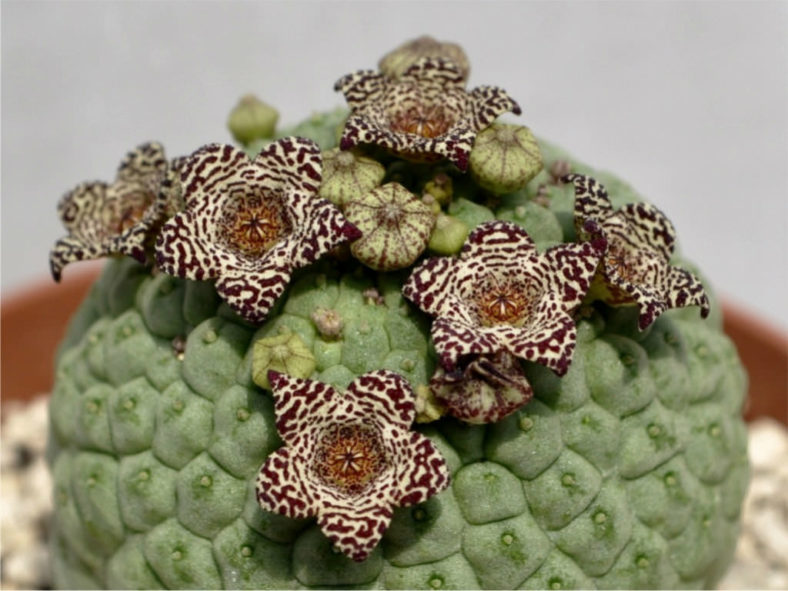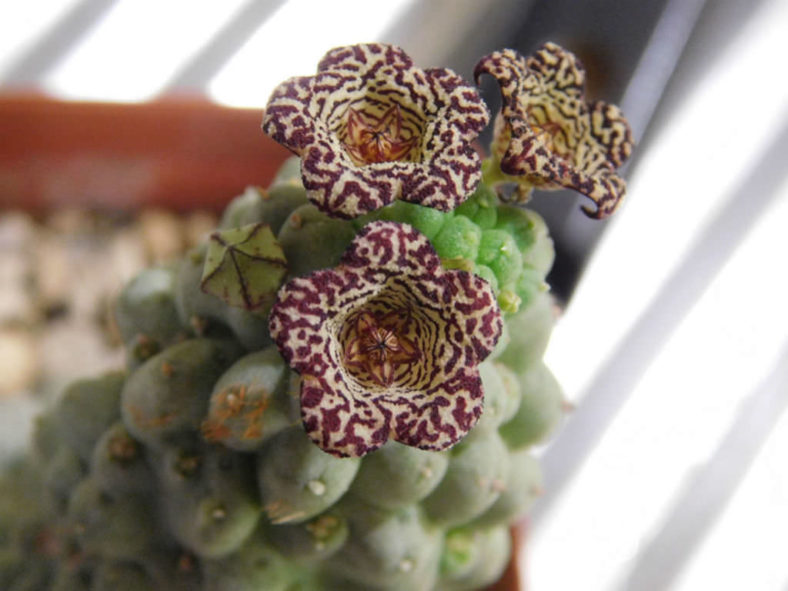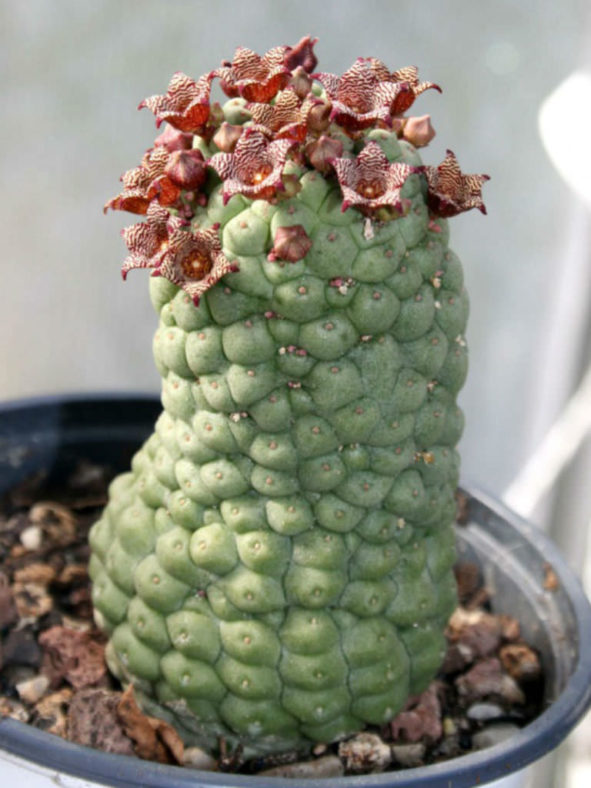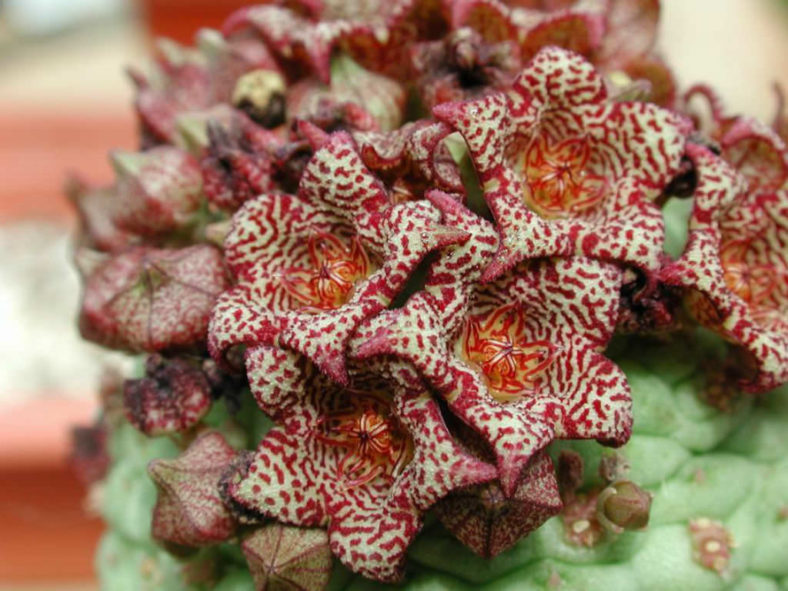Scientific Name
Larryleachia cactiformis (Hook.) Plowes
Synonym(s)
Ceropegia cactiformis, Hoodia cactiformis, Lavrania cactiformis, Leachia cactiformis, Leachiella cactiformis, Stapelia cactiformis, Trichocaulon cactiformis
Scientific Classification
Family: Apocynaceae
Subfamily: Asclepiadoideae
Genus: Larryleachia
Etymology
The specific epithet "cactiformis" (pronounced "kak-TIF-for-miss") means "cactus-shaped, having the form of a cactus". It refers to the resemblance of this species to some members of the Cactaceae family.
Origin
Larryleachia cactiformis is native to South Africa. It occurs on stony, often north-facing slopes from south of Eksteenfontein to Pofadder in the Northern Cape province.
Description
Larryleachia cactiformis is a small succulent with erect, cylindrical-clavate, whitish to grey-green stems with flattened, rounded polygonal tubercles, each tipped with a small conical to flattened leaf rudiment. The stems are thick and fleshy, growing up to 6 inches (15 cm) tall and 2.4 inches (6 cm) in diameter. They are often solitary or branching from the base, forming a clump of up to 10 stems. The tubercles are crowded but arranged into 12 to 16 rows.
The flowers appear congregated near the apex, solitary or in clusters of 2 to 5, on very short pedicels. The corolla is bell-shaped and can reach a diameter of 0.6 inches (1.5 cm). Inside, it is white to pale yellow, barred (rarely spotted) with purple-red to more or less uniformly purple-red or maroon, covered with obtuse papillae, usually each with a small apical bristle. The corona is spotted and lined with red on a yellowish background.

Varieties of Larryleachia cactiformis
- Larryleachia cactiformis var. cactiformis
- Larryleachia cactiformis var. felina
How to Grow and Care for Larryleachia cactiformis
Hardiness: USDA hardiness zone 9a to 11b: from 25°F (-3.9°C) to 50°F (10°C).
Stapeliads are relatively easy to grow. However, they should be treated as outdoor plants as they will easily rot indoors and cannot flower without exposure to outdoor temperature fluctuations. They should be grown under cover so that watering can be controlled. Stapeliads require a reasonable amount of sunlight to promote flowering and maintain a well-shaped plant. Very shady positions will produce very poor flowering.
These plants come from climates where they survive extremely high summer temperatures, so most growth occurs in spring and fall, with flowering in fall as the weather cools. During the growing season, water moderately when needed, ensuring the soil is pretty dry between waterings. Do not water between late fall and early spring.
The easiest and best way to propagate Stapeliads is with stem cuttings, which can be taken virtually year-round. Seed is also a method of propagation.
See more at How to Grow and Care for Stapeliads.
Links
- Back to genus Larryleachia
- Succupedia: Browse succulents by Scientific Name, Common Name, Genus, Family, USDA Hardiness Zone, Origin, or cacti by Genus
Photo Gallery
Click on a photo to see a larger version.


